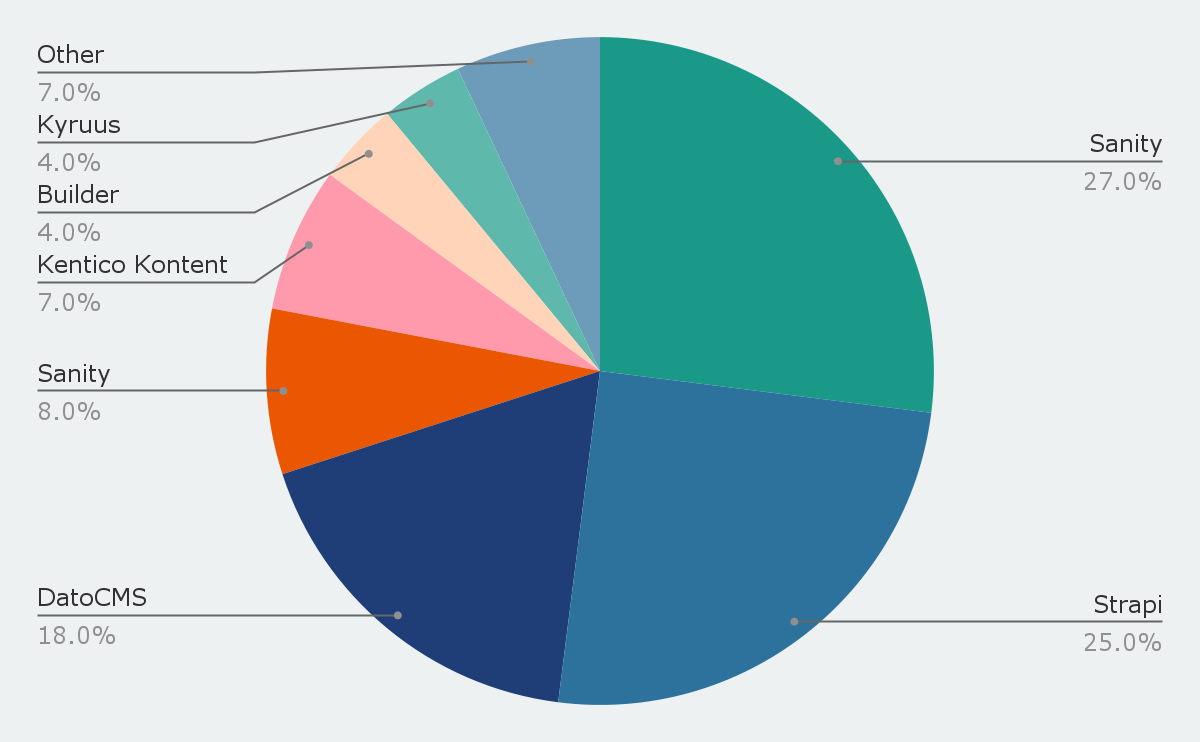Introduction to Headless CMS: Pros, Cons, and Why choose it
The most recent content management system dominating today's marketplace, unrolled to boost your multi-channel digital strategy.
6.5.2021
What is a Headless CMS?
A traditional content management system has both the back-end and front-end systems tightly coupled together. But, a headless CMS has no built-in front-end, which is why we refer to it as "headless". Instead, the headless CMS uses APIs to deliver content onto multiple content display channels (heads) independent of your CMS, be that a website, a mobile application, digital signage, kiosk, or any IoT device. They use a Content-as-a-Service approach, housing content separately from the output media.
The primary components of a headless CMS are,
- Content Management Interface and,
- The database.

How does Headless CMS work?
You can break down the workflow within a headless CMS into three basic steps.
- Your Content writers, editors, and graphic designers input content onto the content management interface or the CRUD (Create, Read, Update, and Delete) user interface in the CMS back-end. Content creators do not require programming or data modeling skills to perform CRUD operations.
- The content will then pass into the database, ready to render.
- A RESTful API renders content stored in the database in a raw data format such as XML or JSON to whatever application that you require the particular piece of data. Developers can develop multiple applications unique to each of your business requirements and connect the headless CMS to feed in timely content.
Headless CMS Vs. Traditional CMS
| Headless CMS | Traditional CMS | |
| Hosting & Delivery | The majority in the cloud but can host in-house as well | In-house |
| Content Model | Building block for many content output channels | Built for a single page |
| Performance | Fast and does not deteriorate performance over time | It gets slower over time as the content in the database increases |
| Cost | No hosting cost only includes a subscription fee. Quick proof of concept | High up-front cost, including hosting |
| Scalability | Easily scalable over multiple platforms | Hard to scale beyond the specified platform. |
| Supported devices | Limitless | Limited |
| Reach | One-to-many | One-to-one |
| Development workflow | Agile | Waterfall |
Examples of Headless CMS
The following chart showcases the most popular headless CMS solutions and their distribution in the current market.

From: https://trends.builtwith.com/cms/headless
We at Framian choose DatoCMS after having tried many others because of superior user experience, collaborative editing, and customizable navigation.
Pros of Headless CMS
1. Omni-channel output
Your content can output through multiple systems and applications without limiting to a single website as with traditional CMS. So, you can reach a wider audience through various channels.
2. Increases content value
Your content is valuable. But, the content in a headless CMS is even more valuable as the content is reusable and is highly available over multiple channels. As the headless CMS operates as a single source of truth and a central repository, your content is future-proof. You can reuse the CMS for your current applications and applications that you haven't even thought of yet and may come up with in the future.
3. Increased security
The majority of traditional CMSs are community-supported and open-source such as WordPress, Joomla, and many more. So, security is constantly at stake in a traditional CMS. But, as the content is separate from the presentation layer in headless CMS and most headless CMSs are not open-source, the probability for security exploitation is lower.
4. Scalability and flexibility
Most headless CMSs are cloud-based and offer as a Software-as-a-Service (SaaS). So, cloud-based headless CMSs automatically inherit cloud properties including, availability, elasticity, scalability, etc. On the other end, you have the freedom and flexibility of building and customizing a front-end to cater to your unique needs with your choice of front-end tooling.
5. Quick launch
You can spin up a complete project with the content, websites, and applications much quicker with headless CMS as it replaces the slow waterfall methodology with agile framework development. Content editors can reward with a faster editing experience as they need not concentrate on content rendering but only on content editing.
Cons of Headless CMS
1. Loss of in-built functionality
Say you have a Digital Experience Platform (DXP) with features including personalization, commerce, marketing automation, analytics, etc., with a configurable UI. If you switch to a headless CMS, you will lose access to all these functionalities. So, switching to headless can be a take-all-or-nothing decision. Of course, you can build these functions into a headless CMS, but ask yourself, at which cost.
2. Pseudo-simplicity
Headless CMS decouples the front-end from the back-end to simplify the complex system. But, the reality is that the complexity shifts from server-side to front-end when switching from traditional CMS to headless CMS. Simultaneously, the cost of infrastructure and developer support to set up and manage presentation components rise.
3. Need more developer support
Headless CMSs offer you unparalleled supportability for the integration of new technologies, including IoT. But, to reap the benefit, you have to have a developer team with steep knowledge in developer languages, formatting, multiple codebases, and front-end development technologies.
Why Choose Headless CMS?
A headless CMS does not replace a traditional CMS nor a DXP. But, it is another alternative content management system ideal only for specific use cases.
If you need to take control of the design of your website and if the templates of your traditional CMS puts you through rigid constraints and limit you from reaching certain essential functionality, headless CMS can be a go-to for you.
On the contrary, many traditional CMSes have even advanced functionality for creating web pages but lack essential functionality and templates to create mobile applications. So, a headless CMS can be an investment for a mobile application development company reusing its content in multiple apps.
But, if you are an organization with few developers with slow turnaround times, a headless CMS may put your business through an additional cripple because you do not have adequate human resources to fuel the project. Else, if you have only a couple of web pages and a single mobile page then, burning down cash on a headless CMS is useless comparing your cost to profit.
However, headless CMSs are popular in e-commerce sites, products, services, websites, and web applications when analyzing current trends.
Headless at Framian
We've been working with headless websites at Framian for almost three years and, in that time, worked on over a dozen headless projects. Contact us here to find out more and talk with us about your needs.
Steve Peltonen
Framian Oy
Book an online meet up
🕑 30 min
📅 Monday - Friday
We are more than willing to answer any questions you may have. Book a 30 minute online meet up by selecting a suitable time for you. Fill out your email and get the web conferencing details.
© 2024 Framian Ltd. Agree that you will not use these products for any purposes prohibited by law, including, without limitation, the development, design, manufacture, or production of nuclear, missile, or chemical or biological weapons.